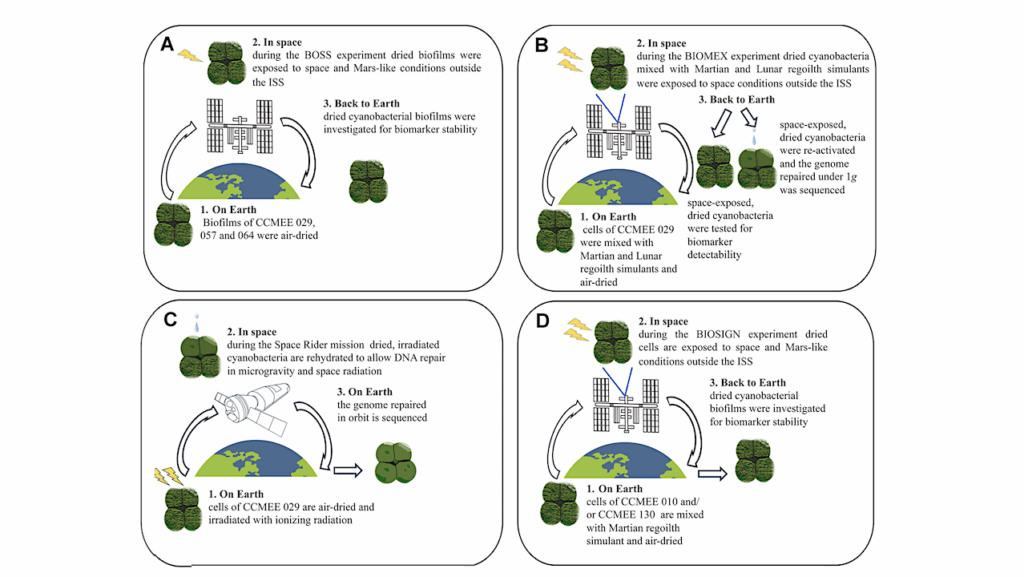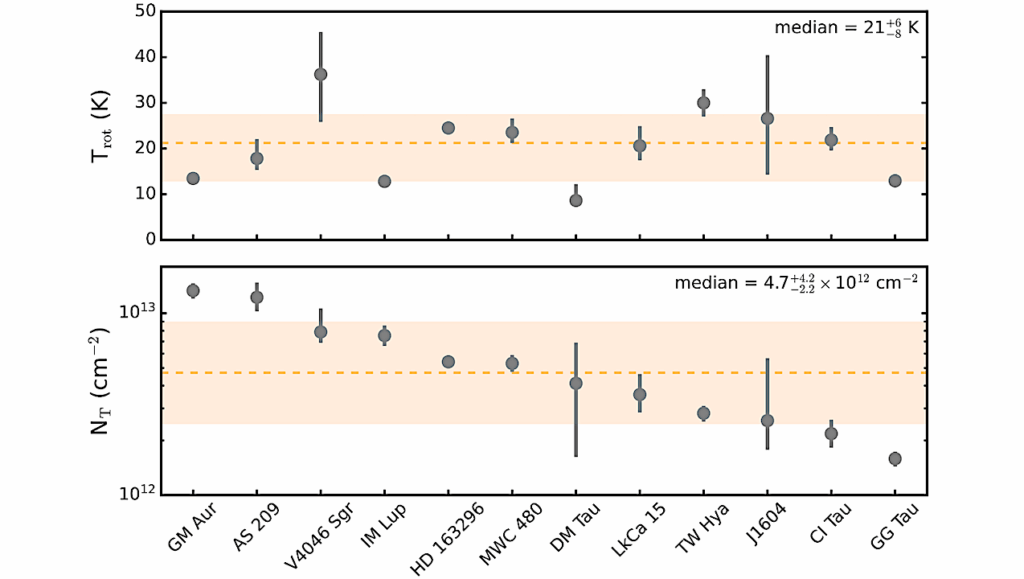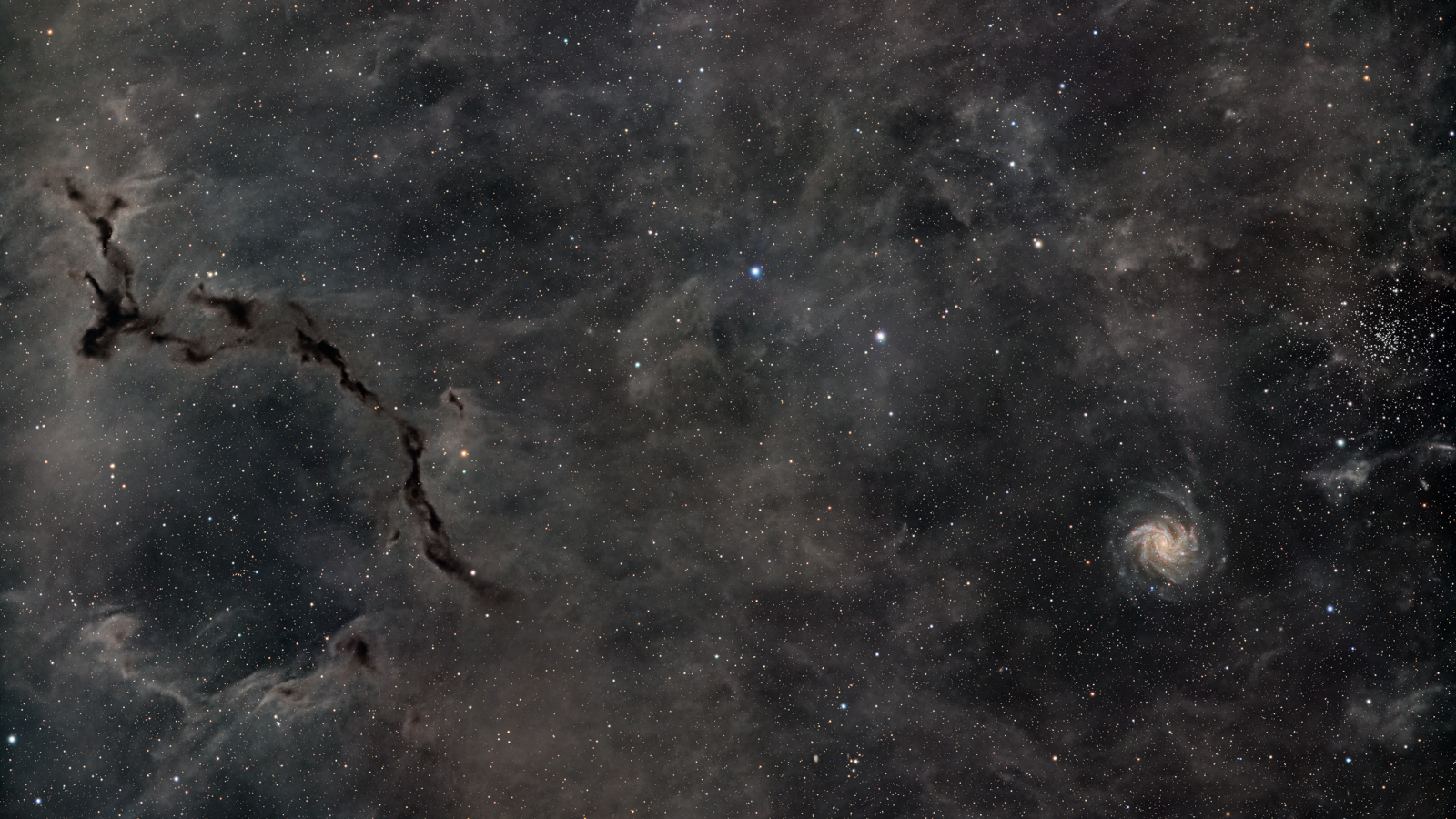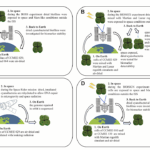Now Reading: Prebiotic Competition And Evolution In Self-replicating Polynucleotides Can Explain The Properties Of DNA/RNA In Modern Living Systems
-
01
Prebiotic Competition And Evolution In Self-replicating Polynucleotides Can Explain The Properties Of DNA/RNA In Modern Living Systems
Prebiotic Competition And Evolution In Self-replicating Polynucleotides Can Explain The Properties Of DNA/RNA In Modern Living Systems
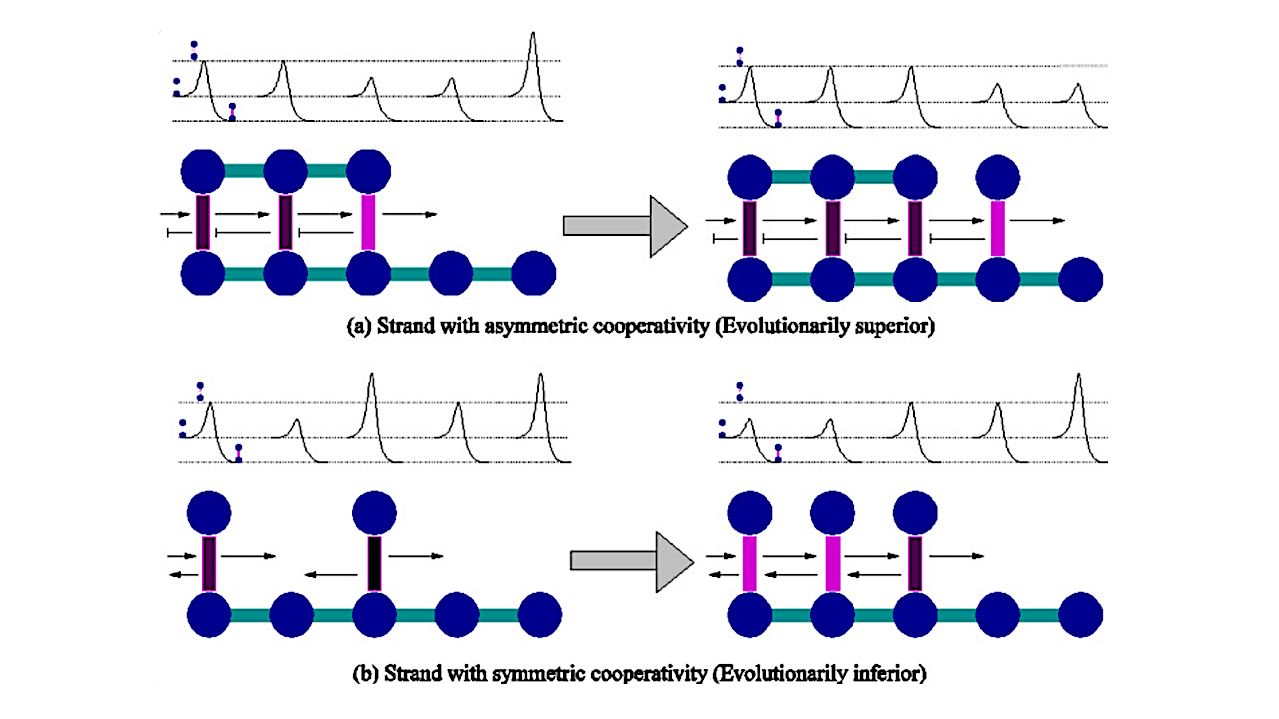

a The energy diagrams above the polymers show the heights of the kinetic barriers for bond formation/dissociation in various regions. Dark- vertical bars are hydrogen bonds with high kinetic barrier, while lighter bars denote bonds with lower kinetic barriers. The balls-and-sticks diagram of polymer growth illustrates the fact that asymmetric cooperativity enables faster strand growth by lowering kinetic barrier for bond formation to the right. Asymmetric kinetic influence of a hydrogen bond on adjacent monomers (raising the barrier of the left bond and lowering it for the right) optimizes strand elongation as well as increases the duration of monomer bonding to the template strand to increase the probability of covalent bond formation. b With symmetric kinetic influence, hydrogen bonds that are away from the growth front (second bond from left) have lower kinetic barriers. Thus, monomers are drawn away from growth front, resulting in lower growth rate. This makes symmetric replicators evolutionarily inferior (From Ref [26], with permission) — BMC Evol Biol via PubMed
Living systems, uniquely in nature, acquire, store and use information to maintain a highly ordered state while remaining far from thermal equilibrium. The molecular carriers of heritable information, RNA in virtually all living systems consist of the same four nucleotides.
The properties of DNA are similarly universal among cells. Thymine substitutes for uracil and deoxyribose for ribose in going from RNA to DNA.
Multiple investigations of plausible prebiotic chemistry suggest it likely produced a complex, racemic mixture of multiple different nucleobases including “unnatural” nucleobases that can produce replicating DNA or RNA. Thus, there is no clear reason for U,C,G,A, and T to be the only constituent monomers generated by prebiotic chemistry.
It is reasonable to assert that they emerged non-randomly from many potential alternative nucleotides. Furthermore, while polynucleotides in living systems possess physicochemical properties that permit encoding and transmitting information, they also retain biophysical properties, such as strand directionality, anti-parallel strand orientation, complementary base pairing and homochirality, that confer no obvious evolutionary advantage. In fact, as outlined below, some of these properties seem to be disadvantageous to modern life.
Prebiotic Competition And Evolution In Self-replicating Polynucleotides Can Explain The Properties Of DNA/RNA In Modern Living Systems, BMC Evol Biol via PubMed (open access)
Astrobiology, Genomics,
Stay Informed With the Latest & Most Important News
Previous Post
Next Post
-
 012024 in Review: Highlights from NASA in Silicon Valley
012024 in Review: Highlights from NASA in Silicon Valley -
 02Panasonic Leica Summilux DG 15mm f/1.7 ASPH review
02Panasonic Leica Summilux DG 15mm f/1.7 ASPH review -
 03How New NASA, India Earth Satellite NISAR Will See Earth
03How New NASA, India Earth Satellite NISAR Will See Earth -
 04And Thus Begins A New Year For Life On Earth
04And Thus Begins A New Year For Life On Earth -
 05Astronomy Activation Ambassadors: A New Era
05Astronomy Activation Ambassadors: A New Era -
06SpaceX launch surge helps set new global launch record in 2024
-
 07Space Force plans new ‘Futures Command’ amid pressure to speed up modernization
07Space Force plans new ‘Futures Command’ amid pressure to speed up modernization













